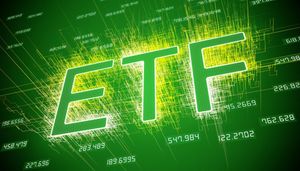
In a startling prediction that has sent ripples through financial circles, Universa Investments, the renowned "black swan" fund, forecasts an imminent euphoric 20% surge in the stock market before an unprecedented and historic crash. Led by founder and Chief Investment Officer Mark Spitznagel, the firm, known for its uncanny ability to profit from extreme market dislocations, warns that the current rally is merely a "parabolic blow-off top" preceding a downturn potentially more severe than the Great Depression.
This audacious outlook from a fund with a proven track record of navigating crises demands attention. Universa's strategy, rooted in Nassim Nicholas Taleb's "black swan" theory, positions itself to thrive when the unexpected and highly impactful occurs. Their latest warning suggests investors are currently experiencing the calm before a financial storm, albeit one preceded by a final, exhilarating market ascent.
What Happened: Universa's Ominous Forecast and Why It Matters
Mark Spitznagel explicitly states that U.S. stocks, specifically the S&P 500 (SPX), could climb another 20% from current levels, potentially pushing the index beyond 8,000 points. He characterizes this anticipated rally as a "euphoric high" that will ultimately give way to the "worst crash" seen in our lifetime, with U.S. equity markets plummeting by as much as 80%. Spitznagel emphasizes that "we're in the middle of that (rally) right now, not at the end of it."
Universa's credibility stems from its remarkable performance during past crises. In 2008, the fund reportedly posted returns exceeding 100%. More recently, in March 2020, as global markets reeled from the COVID-19 pandemic, Universa generated an estimated 4,000% (or 4,144%) return. Since its inception in 2007, the firm boasts an average return on capital over 100%, demonstrating its efficacy as a "tail-risk" hedge. This track record lends significant weight to Spitznagel's current, dire pronouncements.
The rationale behind Universa's prediction draws unsettling parallels to the "frenzy at the end of the 'Roaring Twenties'" preceding the 1929 crash. Spitznagel attributes the current market bubble to unchecked debt expansion and the delayed, yet potent, effects of aggressive Federal Reserve rate hikes. He argues that the Fed is "way behind the curve" by maintaining historically high interest rates, and that any future easing will likely escalate into "panic-driven bailouts," inevitably triggering a systemic market collapse. Universa views the market as a "tinderbox time bomb," laden with systemic risks from repeated government and central bank interventions.
The Market's Treacherous Ascent: Who Might Win or Lose?
Should Universa's prediction unfold, the market will first experience a period of intense, perhaps irrational, optimism. During this "euphoric high," a broad range of equities could see significant gains as investors chase returns, pushing the S&P 500 (SPX) to new highs. Growth stocks, often more sensitive to market sentiment, might lead this charge, benefiting from speculative fervor. However, this rally is presented as a deceptive prelude to an unprecedented decline.
When the predicted crash materializes, the impact would be widespread and severe, affecting nearly all sectors and companies. Highly leveraged companies or those with weaker balance sheets would be particularly vulnerable. Consumer discretionary sectors, often tied to economic confidence, could face significant headwinds. Conversely, defensive sectors like utilities and consumer staples, while not immune, might offer relative stability. Companies with strong cash flows, minimal debt, and essential services could be better positioned to weather an 80% market contraction. Mark Spitznagel advises individual investors against attempting to time the market, advocating for passive investment strategies, primarily holding index funds, as "Cassandras make terrible investors." Universa's strategy is not about market timing for the average investor but providing sophisticated "tail-risk protection."
Broader Implications: A Systemic Reckoning
Universa's forecast extends beyond mere market movements, touching upon the fundamental stability of the financial system. The firm's analysis points to an accumulation of systemic risks, arguing that decades of central bank interventions and government policies have created a fragile economic environment. This "powder keg" awaits a "firestorm," highlighting the potential for a deeper, structural crisis rather than just a cyclical downturn.
The implications for the financial industry are profound. Institutions and high-net-worth individuals who utilize Universa's services essentially acquire an "insurance policy" against severe market dislocations. This emphasizes the growing demand for sophisticated hedging strategies in an environment perceived to be increasingly volatile and unpredictable. Regulatory bodies might also face increased pressure to address systemic risks, particularly concerning debt levels and central bank policies, should Universa's dire prediction begin to materialize. Historically, such extreme forecasts often draw comparisons to events like the Dot-com bubble bust or the 2008 financial crisis, but Spitznagel warns this could be worse.
What Readers Should Pay Attention to Next
Investors should closely monitor indicators that Spitznagel identifies as "late-stage euphoria." These include institutional investors' equity exposure reaching its highest point since November 2007 and U.S. households' equity allocation hitting a record high, surpassing the peak of the dot-com bubble. The recent "uninversion" of the yield curve is also highlighted as placing the market in "black swan territory," a key signal for Universa.
While Spitznagel acknowledges a short-term "Goldilocks" scenario might persist, he views recent market turbulence as "temporary blips" or "false corrections" designed to "shake people out." The critical pivot will occur when the Federal Reserve, currently "behind the curve," shifts from maintaining high rates to implementing "panic-driven bailouts." This transition is expected to be the catalyst for the historic crash. Readers should observe central bank rhetoric, inflation data, and employment figures for signs of this impending policy shift, which could signal the end of the euphoric surge and the beginning of the downturn.
Conclusion: Navigating the Precipice
Universa Investments' prediction of a 20% stock market surge followed by an 80% crash serves as a stark warning in an already uncertain financial landscape. While individual investors are advised against attempting to time such extreme market movements, the "black swan" fund's track record and the detailed rationale behind its forecast cannot be ignored. The current market, according to Spitznagel, is on a precipice, experiencing a final burst of irrational exuberance before a potentially devastating fall.
As the financial world grapples with record debt, persistent inflation, and evolving central bank policies, Universa's message underscores the importance of understanding systemic risks and considering robust risk management strategies. Investors should remain vigilant, focusing on long-term goals and diversification, rather than succumbing to the allure of a potentially fleeting euphoric rally. The coming months will reveal whether Spitznagel's ominous prophecy unfolds, forever altering the landscape of global finance.
This content is intended for informational purposes only and is not financial advice.





